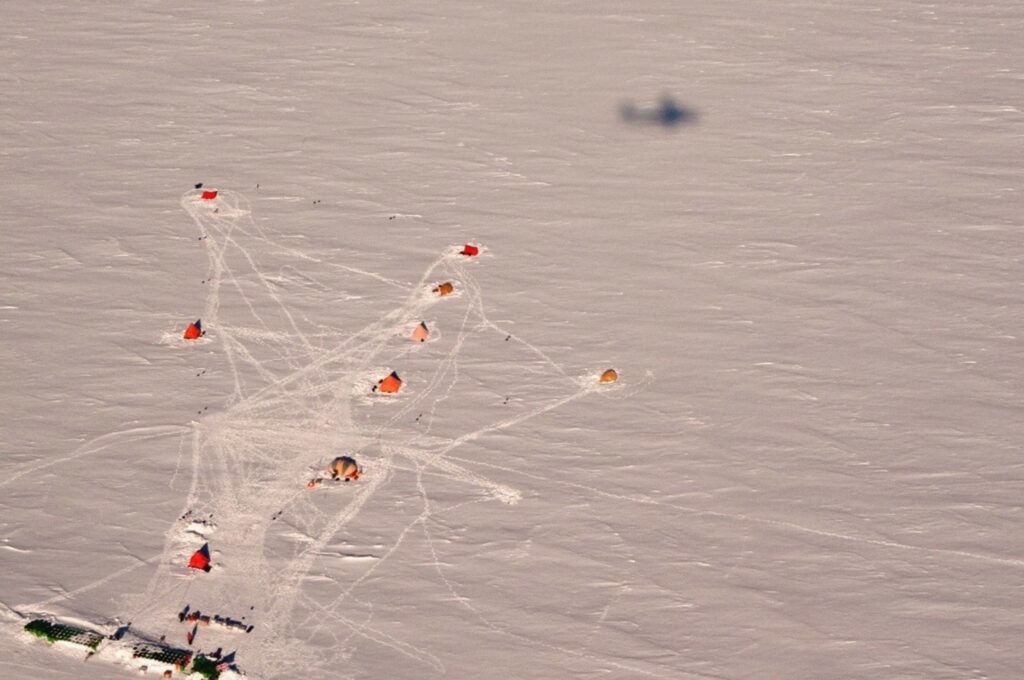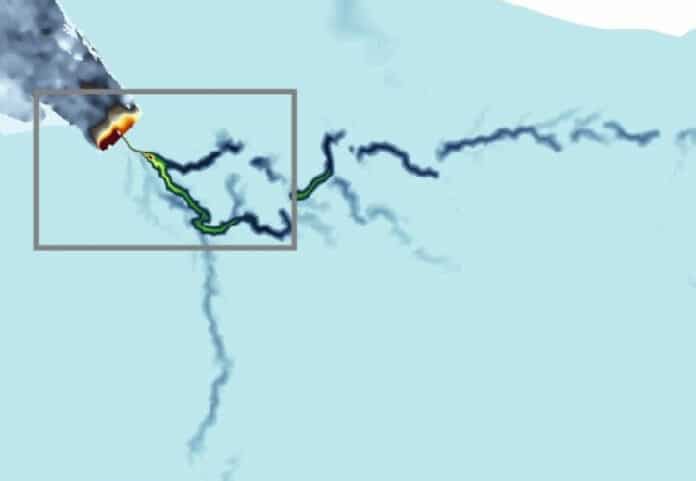Scientists at Imperial College London, the University of Waterloo, Canada, Universiti Malaysia Terengganu, and Newcastle University have discovered an unexpected river under the Antarctic ice sheet. The discovery of this 460km-long river shows the ice sheet’s base has more active water flow than previously thought, which could make it more susceptible to changes in climate. The river is believed to affect the flow and melting of ice, contributing to the accelration of ice loss during climate warming.
Co-author Professor Martin Siegert, from the Grantham Institute at Imperial College London, said: “When we first discovered lakes beneath the Antarctic ice a couple of decades ago, we thought they were isolated from each other. Now we are starting to understand there are whole systems interconnected by vast river networks, just as they might be if there weren’t thousands of meters of ice on top of them.
“The region where this study is based holds enough ice to raise the sea level globally by 4.3m. How much of this ice melts and how quickly it is linked to how slippery the base of the ice is. The newly discovered river system could strongly influence this process.”
However, because the summers are still too cold, there is not enough surface melting to form moulins in Antarctica. This led to the assumption that there was not a lot of water present at the foot of the Antarctic ice sheets.
The latest finding refutes this theory by demonstrating enough water from basal melt alone to form significant river systems beneath kilometers of thick ice.

Scientists made this discovery through a combination of airborne radar surveys. The surveys allowed them to look beneath the ice and modeling of the ice sheet hydrology. The crew concentrated on a relatively unexplored and inaccessible region that contains ice from both the East and West Antarctic Ice Sheets and extends to the Weddell Sea.
Lead researcher Dr. Christine Dow from the University of Waterloo said, “That such a large system could be undiscovered until now is a testament to how much we still need to learn about the continent. From satellite measurements, we know which regions of Antarctica are losing ice and how much, but we don’t necessarily know why. This discovery could be a missing link in our models. We could be hugely underestimating how quickly the system will melt by not accounting for the influence of these river systems.”
“Only by knowing why ice is being lost can we make models and predictions of how the ice will react under further global heating and how much this could raise global sea levels.”
“For example, the newly discovered river emerges into the sea beneath a floating ice shelf – where a glacier extending out from the land is buoyant enough to begin floating on the ocean water. However, the freshwater from the river churns warmer water towards the bottom of the ice shelf, melting it from below.”
Co-author Dr. Neil Ross, from the University of Newcastle, said: “Previous studies have looked at the interaction between the edges of ice sheets and ocean water to determine what melting looks like. However, the discovery of a river that reaches hundreds of kilometers inland, driving some of these processes, shows that we cannot understand the ice melt fully without considering the whole system: ice sheet, ocean, and freshwater.”
Journal Reference:
- Dow, C.F., Ross, N., Jeofry, H. et al. Antarctic basal environment shaped by high-pressure flow through a subglacial river system. Nat. Geosci. (2022). DOI: 10.1038/s41561-022-01059-1
